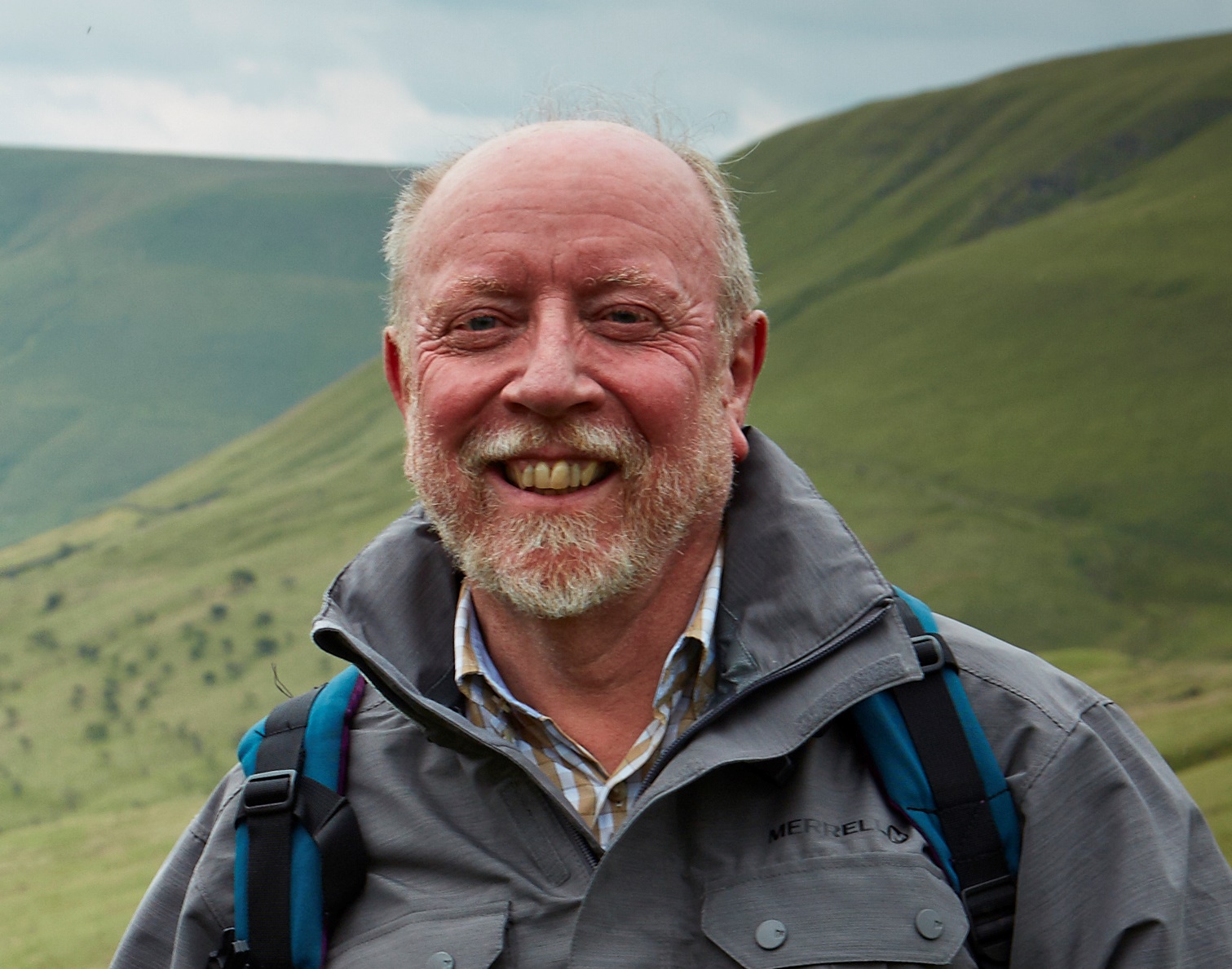The sight of thousands of starlings – a common garden bird species – swooping overhead in perfect formation is one of the UK's most incredible wildlife phenomena.
Starling murmurations take place at dusk and early evening in the autumn and winter months in the UK. Our murmuration guide explains what a murmuration is, the science behind them and where to see a starling murmuration in the UK.
- Bird migration guide: which species migrate and where do they go?
- Guide to British seabirds: how to identify and where to see them
- Birds of prey guide: how to identify UK raptors and where to see them

What is a starling murmuration?
It’s been called the greatest wildlife spectacle in Britain and is remarkable to witness. Studies suggest that starlings congregate in these remarkable ‘murmurations’ to deter possible predators, which are confused by the swirling masses. Despite a recent drop in their overall population, you can still witness the mesmerising sight of thousands of birds performing their aerial dance at dawn and dusk.
What time of year do starling murmurations happen?
In the UK, starling murmurations take place from early autumn to early spring (November to February).

What is the science behind starling murmurations?
The winter months are the best time to witness a starling murmuration – but what is science behind these mass groupings of birds? Why do starlings group together? And how do they not crash into each other? Jess Price from the Sussex Wildlife Trust explains the science behind starling murmurations.
This incredible wildlife spectacle, known as murmuration, has interested scientists for years. Questions, such as why these great congregations occur and how starlings know when to turn in unison without colliding have been the subject of much debate.
Why and how does a murmuration happen?
Starlings have extremely fast reaction times and can make changes in their flight direction in a split second. It is now generally thought that flocking helps to protect the starlings from predators. We all know the old saying that there’s safety in numbers.
Put simply, the more starlings there are in a flock, the smaller chance each individual has of being caught by an airborne predator. Studies have even shown that individual starlings move around within the flock and try to minimise their time on the edge where they are most vulnerable.
They are gregarious birds, living in flocks for much of the year. But it is in winter, when starling numbers are boosted by migrant birds from colder parts of Europe, that these aerial displays are at their breathtaking best.

Where to see a starling murmuration in the UK
Fancy going to watch a starling murmuration near you? Here is a selection of places in Britain where starlings are known to roost.
West Pier Brighton, Sussex
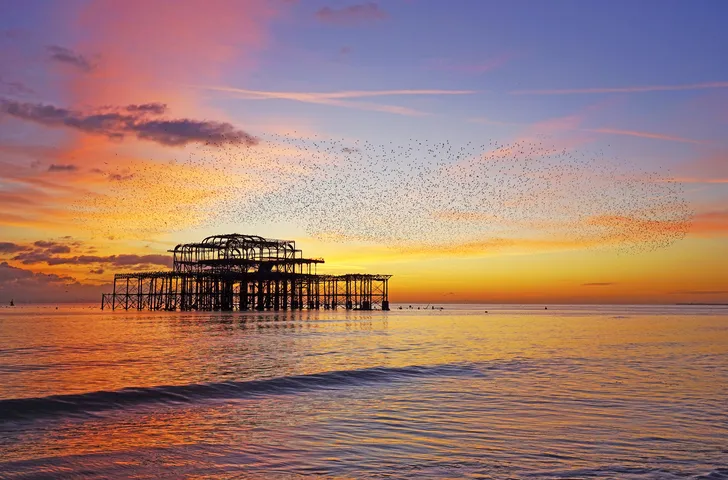
Perhaps the most famous starling murmuration in Britain takes place around the skeletal, derelict West Pier on Brighton’s stony seafront. Up to 40,000 birds arrive from as far away as Scandinavia to winter alongside their native cousins on the pier.
Gretna Green, Dumfries and Galloway
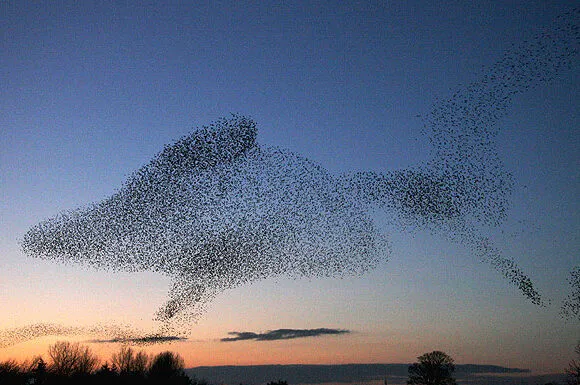
There was a time when only eloping couples flocked to Gretna Green on the English/Scottish border. Nowadays, it’s the aerial visitors that attract the most attention.
This mobile roost of about a million birds is usually seen just west of Gretna, on the border with Cumbria. The landscape here is sparsely populated, with forest, maritime and dairy pasture, coastal flats and estuaries. As autumn advances, keep watch too for whooper swans returning from Iceland.
Leighton Moss, Lancashire

The skies above the bittern-haunted reedbeds of RSPB Leighton Moss near Silverdale turn black at dusk and dawn. Enormous flocks of starlings wheel, turn and swoop through the air, before dropping down like stones to rest for the night.
Albert Bridge, Belfast
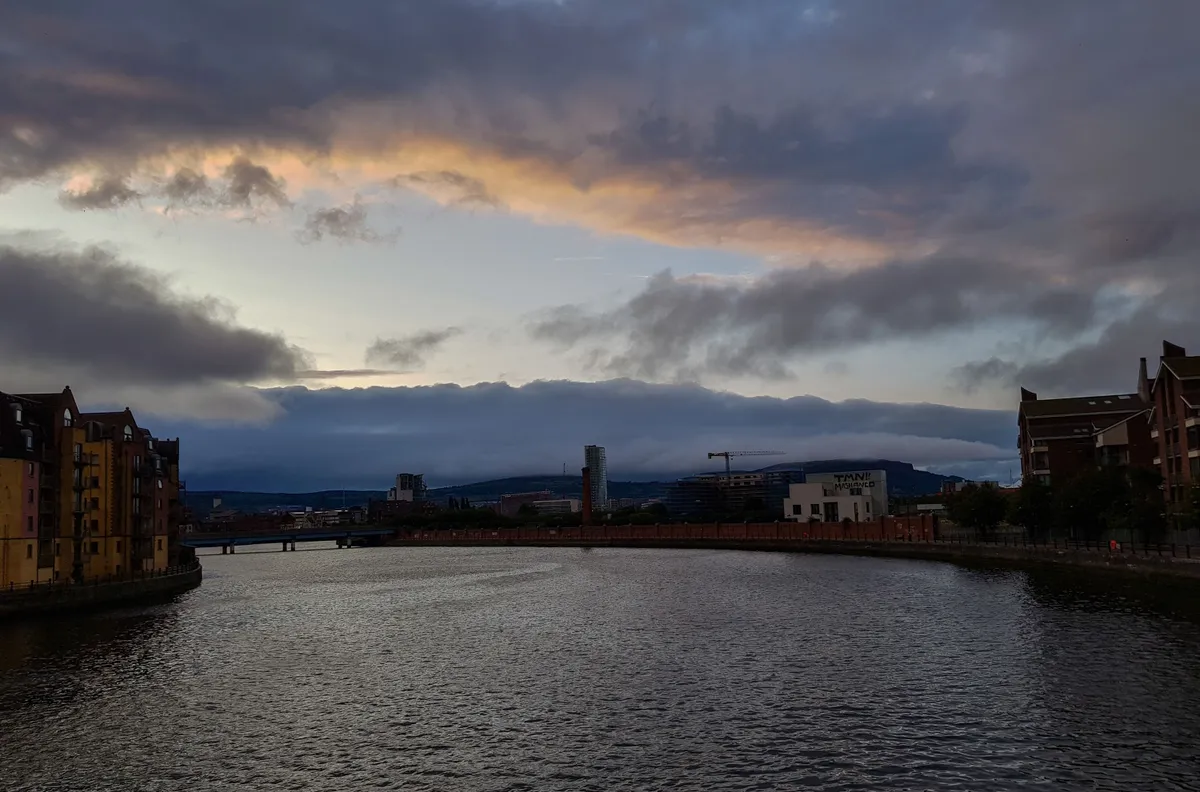
City murmurations don’t come much better than those at Albert Bridge in the centre of Belfast. On winter nights, hundreds of thousands of birds gather noisily together to roost.
Aberystwyth, Ceredigion
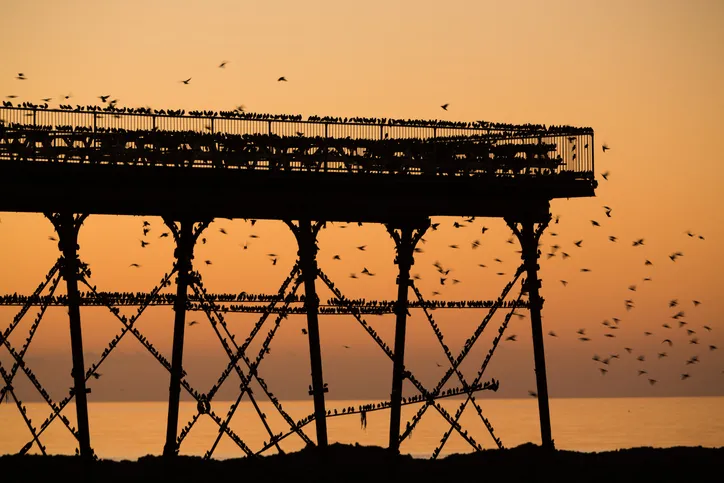
You might hear them before you see them – a thrilling whoosh above Aberystwyth (Heol y Wig). This Welsh resort on Cardigan Bay offers another opportunity to see the birds – there’s even a local hotel called The Starling Cloud. Some 30,000 starlings swirl in from their coastal feeding grounds to roost beneath the iron latticed pier, engaging in a wonderful choreography of synchronised aerobatics. Find out more.
Drumhoney Holiday Park, Lisnarick, County Fermanagh
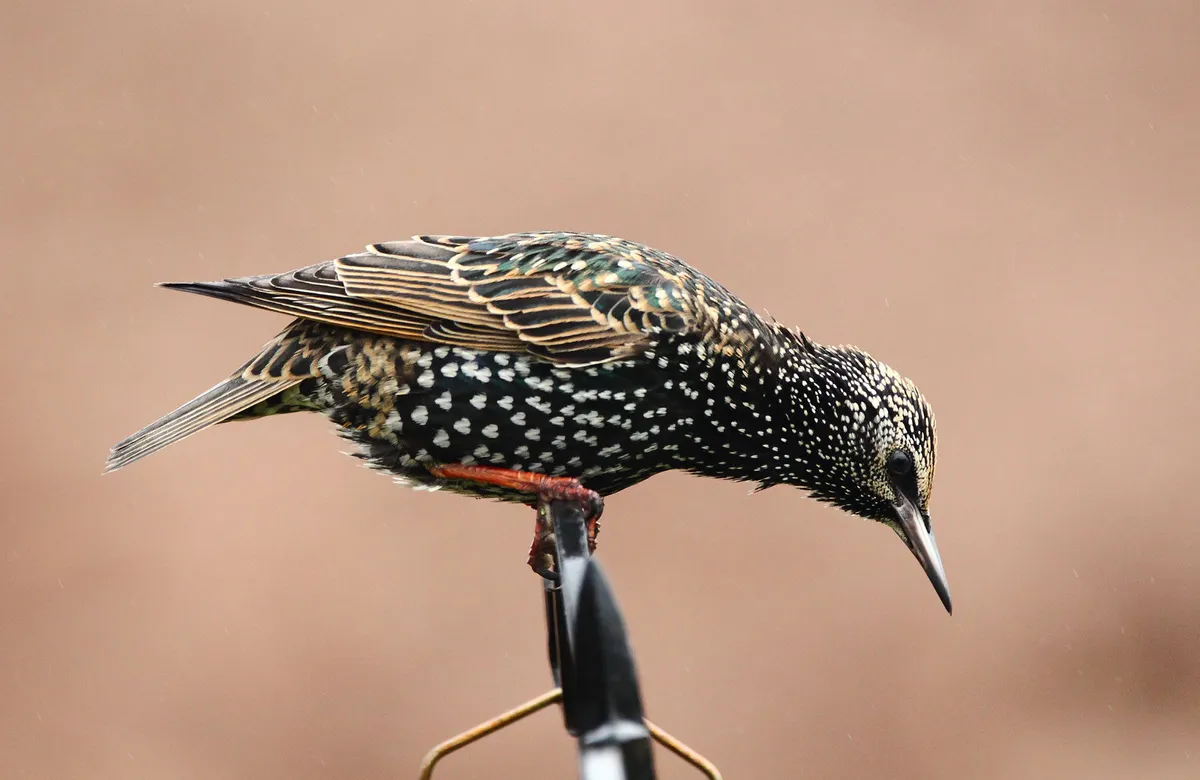
Belfast City Centre hosts the largest roost in Northern Ireland, but a new murmuration was reported in January 2022 above a caravan park at the edge of Lower Lough Erne. The lough contains 40 islands and is also home to wintering birds, such as scaups, great crested grebes, whooper swans and wigeon.
Newport Wetlands, Newport
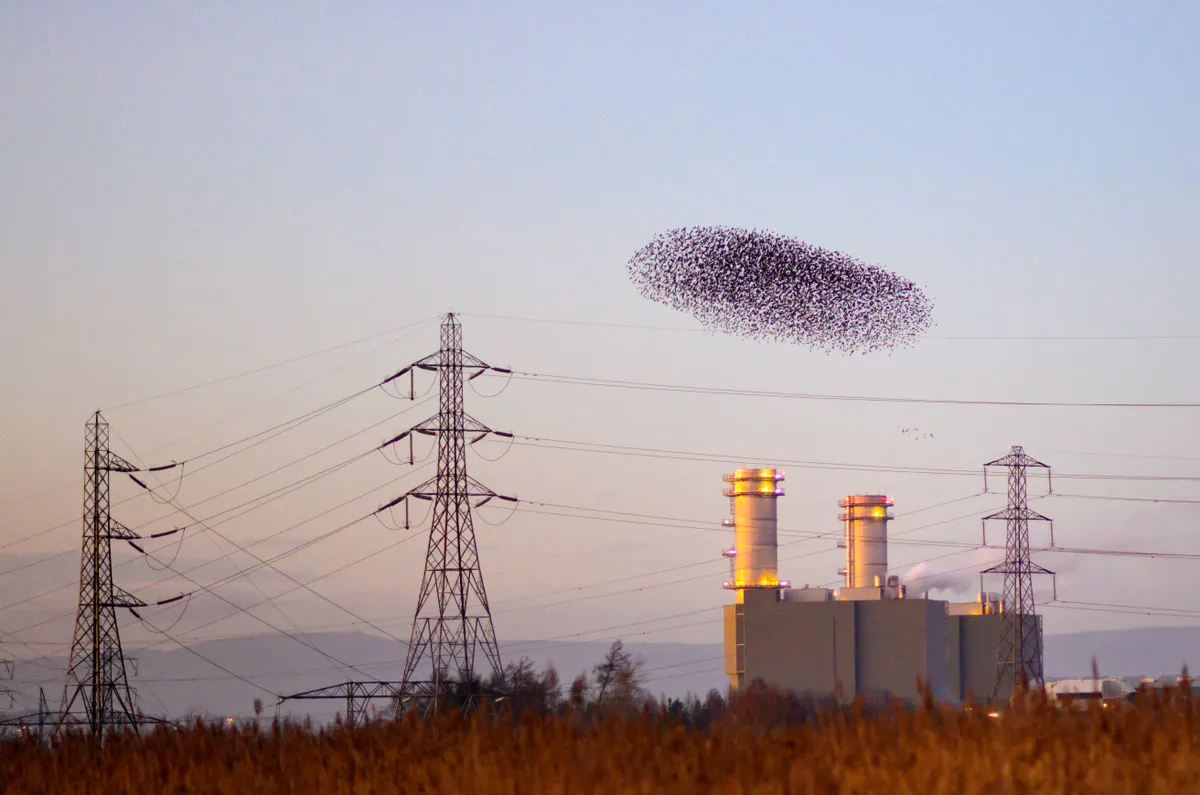
Keep watch for bearded tits and wintering bitterns at the largest wetlands in Wales, with a visitor centre, accessible trails and boardwalks.
The reserve was created to counter habitat loss from the development of Cardiff Bay. The murmuration of about 50,000 is visible across the reserve, before the starlings drop into the reeds. Find out more about Newport Wetlands.
Whisby Nature Park, Lincolnshire
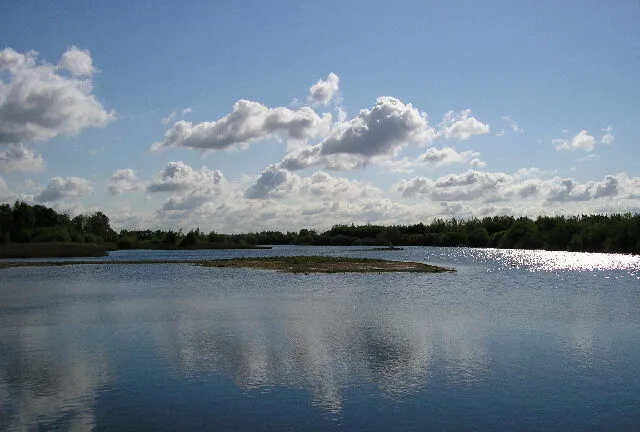
Regenerated sand and gravel quarries are now a mosaic of lakes, grassland, marshland, scrub, willow carr and a small oak woodland, whose winter migrants include goldcrests, redpolls and grey wagtails. The park boasts a visitor centre and paths from which to view the murmuration of about 10,000, billowing like smoke above the reserve. Find out more about Whisby Nature Park.
Ellon, Aberdeenshire

The River Ythan, a remarkably undeveloped estuary in the industrial environs of Aberdeen, is home to the town of Ellon, south of which is a 30,000-strong roost in Hillhead conifer plantation. Retired scientist Ron Macdonald frequently captures footage of the fluctuating shapes made when the murmuration is attacked by peregrines and sparrowhawks.
Attenborough Nature Reserve, Nottinghamshire

At Attenborough Nature Reserve, hundreds of starlings swarm the pale winter sky. They move as one, twisting and turning, rapidly changing direction, yet never break rank. The formation flows like liquid, darkening as the birds cross over each other, then paling again as the birds stretch out.
The murmuration is a work of art in the sky, the birds’ swirling movements reminiscent of the practice of t’ai chi. As the sun sets and the starlings drop to the reed beds to roost, you know the spectacle is over.
RSPB Fen Drayton Lakes, Cambridgeshire

9,000 starlings begin their display at dusk over these beautiful lakes – which were once part of a working quarry – in Cambridgeshire. You're also likely to spot otters, dragonflies, ducks, swans and geese.
Have starling numbers declined in the UK?
Although most murmurations look enormous, these annual flocks are actually quite small compared to what they used to be. In the UK, starling numbers have declined by over 80% in the last 50 years causing this species to be red listed as a bird of high conservation concern.
It is likely that this population crash is due to the shortage of food and nesting sites that comes with more intensive agriculture, increased urban development and the reduction of outbuildings and open eaves on houses.
More birdwatching inspiration
